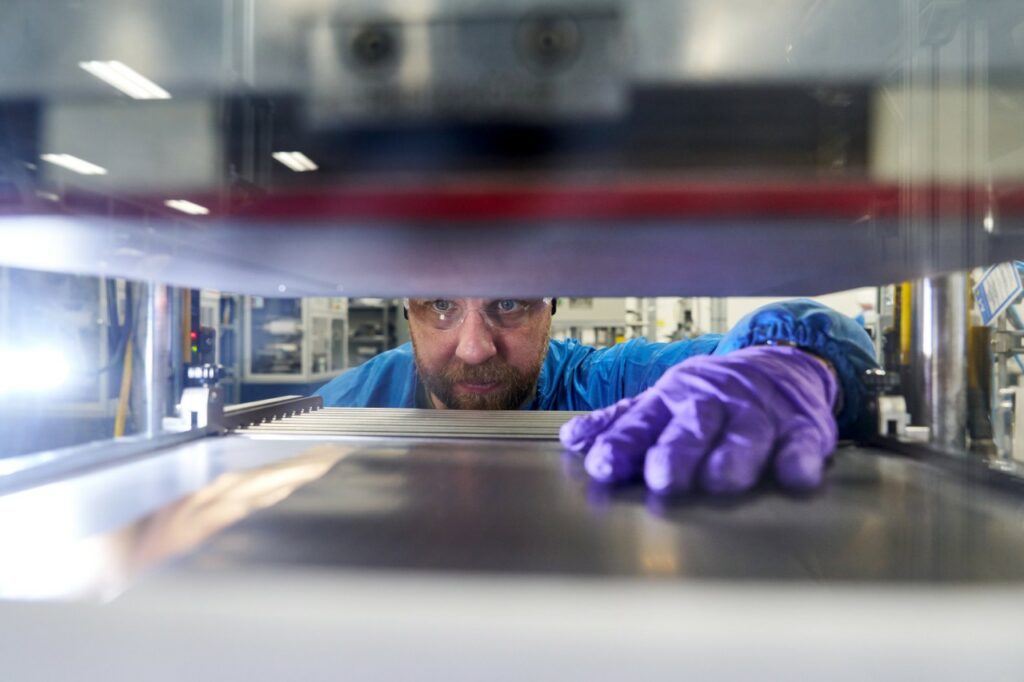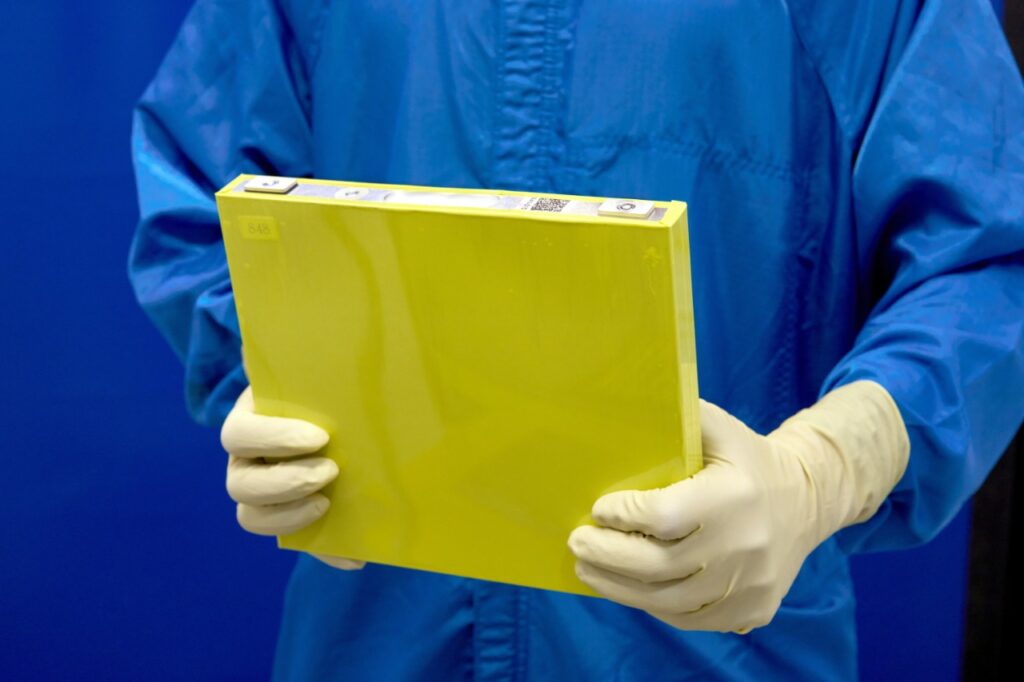
General Motors battery technician Steven Petty Jr. focuses on aligning electrodes on an anode sample for a prototype LMR battery cell in the making. (Photo by Steve Fecht for General Motors)
DETROIT—General Motors (GM) will work with LG Energy Solution to achieve what GM described as a new battery technology breakthrough—commercialization of lithium manganese-rich (LMR) prismatic battery cells for future GM electric trucks and full-size SUVs.
Through these efforts, GM aims to become the first automaker to deploy LMR batteries in electric vehicles (EVs), GM said in a release.
The work will build on a partnership between the two companies to develop prismatic battery cell technology and related chemistries. It is also expected to add to GM’s legacy of American ingenuity that’s produced innovations like the small-block V8 engine, OnStar connected vehicle services, and hands-free Super Cruise.
Ultium Cells, a GM and LG Energy Solution joint venture, plans to start commercial production of LMR prismatic cells in the United States by 2028. Pre-production is expected to begin at an LG Energy Solution facility by late 2027.
The final production-design of these LMR battery cells will be validated at GM’s Warren, Michigan, Battery Cell Development Center, expected to open earlier that year, and at LG Energy Solution’s facility, the release stated.
Battery cathodes require materials like cobalt, nickel, and manganese. Cobalt is the most expensive, but LMR battery cells use a higher proportion of more affordable manganese. They are also said to provide greater capacity and energy density.

An employee holds a full-size prototype LMR battery cell at the General Motors Wallace Battery Cell Innovation Center in Warren, Michigan. (Photo by Steve Fecht for General Motors)
Battery engineers at GM and LG Energy Solution have developed a new LMR prismatic battery cell that reportedly unlocks 33 percent higher energy density than the best-performing lithium iron phosphate (LFP) based cells—at a comparable cost. The LMR battery technology integrates into GM’s battery supply chain and cell manufacturing processes, reinforcing GM’s “strategic investments in domestic battery production and the responsible sourcing of critical materials like lithium, graphite, and manganese from North America,” the company said in the release.
According to GM, its electric truck platform “has segment-leading range using high-nickel chemistry today.” By integrating LMR battery technology and the manufacturing and space efficiency benefits of prismatic cells, GM said, it aims to offer “more than 400 miles of range in an electric truck while achieving significant battery pack cost savings compared to today’s high-nickel pack.”
“We’re pioneering manganese-rich battery technology to unlock premium range and performance at an affordable cost, especially in electric trucks,” said Kurt Kelty, vice president of battery, propulsion, and sustainability at GM, in a statement released by the company. “As we look to engineer the ideal battery for each vehicle in our diverse EV portfolio, LMR will complement our high-nickel and iron-phosphate solutions to expand customer choice in the truck and full-size SUV markets, advance American battery innovation, and create jobs well into the future.”
LG Energy Solution is reported to hold the largest LMR technology IP portfolio globally, having secured more than 200 patents in this field of technology, the company said.
“We’re excited to introduce the first-ever LMR prismatic cells for EVs, the culmination of our decades-long research and investment in the technology,” said Wonjoon Suh, executive vice president and head of the Advanced Automotive Battery division at LG Energy Solution, in a statement. “GM’s future trucks, powered by this new chemistry, are a strong example of our shared commitment to offering diverse EV options to consumers.”
General Motors began researching manganese-rich lithium-ion battery cells in 2015, accelerating this technology development by prototyping LMR cells at its Wallace Battery Cell Innovation Center in Warren. In collaboration with partners, GM engineers advanced cathode materials, electrolytes, additives, form factors, and cell assembly processes to overcome LMR’s legacy challenges in performance and durability, the company said in the release.
Source:
